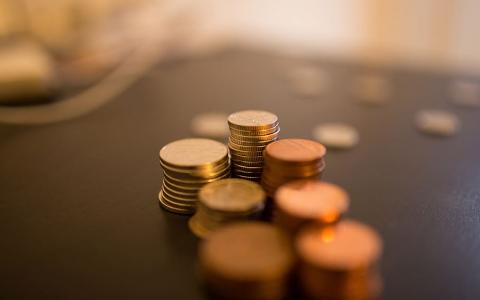
(Quartz) Several prominent economists think inflation is a growing concern for the US economy. There are signs that investors in the $20 trillion US Treasury market agree with them.
Fixed-income investors are hyperaware of any increase in prices for goods and services because it eats into their returns, and they tend to demand higher yields (and therefore lower bond prices) when they’re worried about inflation. That’s why it’s notable that interest rates on 10- and 30-year Treasury securities are back to or higher than they were before coronavirus fears ripped through the global economy. Treasury bonds have lost 2.44% this year, according to the S&P U.S. Treasury bond index.
“Bonds are very risky right now,” said Campbell Harvey, a finance professor at Duke University who pioneered the yield-curve prediction tool.
Economist Ed Yardeni also says he’s “seeing more and more signs of mounting inflationary pressures.” Yardeni coined the term “bond vigilantes” in the 1980s, referring to the power of fixed-income investors to boycott government debt when they disagree with policy. “The bond vigilantes seem to be saddling up and getting ready to ambush the policymakers on the road to reflation,” Yardeni, president of Yardeni Research, wrote in a note to clients. “It could be a heck of a shootout.”
Why inflation could increase
One of the main reason economists like Campbell and Yardeni think inflation could pick up is because the US’s fiscal and monetary bazookas are firing at the same time. That differs from the aftermath of the credit crisis in 2008, when the Federal Reserve’s response to the downturn was robust, but the amount of money Congress dished out to support the economy was seen by some as relatively muted considering the severity of the recession. This time around, politicians in Washington are working on a $1.9 trillion stimulus bill, which is in addition to the $2.5 trillion or so dished out last year. That blows away the roughly $1.8 trillion of support that followed the financial crisis.
That could be setting the Fed on a collision course with unhappy bond investors. A sustained bout of inflation would force the Fed to rethink its policies, potentially empowering bond investors, and Yardeni sees several reasons why prices could swing higher. He noted that a business price gauge showed the fastest growth in nearly six years, that several Fed business surveys show businesses paying the highest prices in a decade, and that an index of raw industrial commodities, led by copper, has shot up faster than it did after the financial crisis. That’s “because the global monetary and fiscal response to the Great Virus Crisis has been greater,” he wrote.
To be fair, it’s not easy to bet against a central bank with a $7.6 trillion balance sheet. “Bond markets will test the Fed, but the Fed has a more powerful set of policy tools than it once did,” Ryan Detrick, chief market strategist for LPL Financial. “They’ve become too cautious to put up much of a fight.”
It’s far from certain that anything catastrophic is in the offing. Market indicators suggest an inflation rate of around 2.2% over the next decade, not much more than the 2% the Fed is aiming for. The question is whether the economy—already rebounding naturally as vaccines go into arms and people start spending their pent-up savings—overheats from heavy government support. While Fed chair Jerome Powell and his colleagues say they are confident they can contain inflation if it comes to that, it’s notable that one of the tools for doing so is higher interest rates. With more than $20 trillion in national debt, it’s not clear the US can afford the borrowing costs that would come with that.
Or as Yardeni wrote: “The policymakers have been bragging lately that they are able to boost economic growth while keeping a lid on inflation and containing financial imbalances. Their recent self-assured statements should be collected as potentially contrary indicators.”



